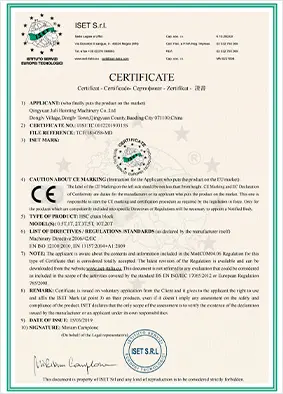


Understanding Pallet Truck Operation A Comprehensive Guide
Pallet trucks, also known as pallet jacks, are essential tools in warehouses, distribution centers, and manufacturing facilities. They are designed to lift and move palletized loads with ease, improving efficiency and safety in material handling. This article will explore the operation of pallet trucks, covering their types, usage techniques, safety measures, and maintenance practices.
Types of Pallet Trucks
Pallet trucks come in various forms, each suited for specific tasks and environments. The most common types include
1. Manual Pallet Trucks Operated by hand, these are the most basic and widely used pallet trucks. They require physical effort to lift and move loads but are highly versatile and cost-effective.
2. Electric Pallet Trucks These motorized versions reduce the physical strain on operators. They are available in both pedestrian-operated and ride-on configurations, suitable for moving heavier loads over longer distances.
3. High-Lift Pallet Trucks Designed to lift pallets to a higher level, these trucks function as both pallets and lifts. They’re particularly useful in loading and unloading operations without needing a fork truck.
4. Heavy-Duty Pallet Trucks Built to handle larger loads, these trucks often come with reinforced frames and larger wheels to navigate rough terrain.
Operating a Pallet Truck
Operating a pallet truck is a relatively straightforward process, but it requires proper techniques to ensure safety and efficiency. Here’s a step-by-step guide
1. Inspect the Equipment Before use, check the pallet truck for any visible damages, such as cracks or broken wheels. Ensure that the hydraulic system is functioning correctly.
2. Position the Load Align the forks of the pallet truck with the entry points of the pallet. Ensure that the load is evenly distributed on the pallet to maintain balance.
3. Lower the Forks Use the handle to lower the forks to the ground. Ensure they are completely under the pallet before lifting.
4. Lift the Load With the handle in an upright position, pump it to raise the forks. Lift the pallet just enough to clear the ground—this helps prevent damage to the floor and provides better maneuverability.
5. Moving the Load While pushing or pulling the pallet truck, maintain a clear line of sight and be aware of surroundings. When navigating corners or tight spaces, move slowly and cautiously.
6. Set Down the Load Once you have reached the desired location, slowly lower the forks to the ground by pulling the handle towards you. Ensure the pallet is stable before moving away.

Safety Measures
Safety is paramount in pallet truck operation. Here are key safety tips to keep in mind
- Operator Training Ensure all operators are trained on proper pallet truck operation and safety protocols. Familiarity with the equipment significantly reduces accidents.
- Load Limits Adhere to the manufacturer's specified load limits for the pallet truck. Overloading can lead to breakdowns and accidents.
- Walk, Don’t Run Operators should walk briskly but not run while using pallet trucks. Running increases the risk of losing control and accidents.
- Use Proper Body Mechanics When lifting the handle or moving the loads, use your legs to avoid back injuries. Keep your back straight and your body balanced.
- Keep Aisles Clear Maintain clear pathways and designated walkways to prevent collisions with other workers or equipment.
Maintenance Tips
Regular maintenance ensures that pallet trucks operate efficiently and safely. Follow these tips
- Daily Inspection Inspect the pallet truck before each use to identify any issues that may need immediate attention.
- Cleanliness Keep the pallet truck clean to prevent any buildup of debris that may affect its functionality.
- Lubrication Regularly lubricate moving parts to ensure smooth operation, especially the wheels and hydraulic system.
- Repairs Address any repairs promptly instead of postponing necessary maintenance to avoid accidents and prolong the lifespan of the equipment.
Conclusion
Pallet truck operation is a critical component of efficient material handling in various industries. By understanding the types of pallet trucks available, mastering operating techniques, adhering to safety measures, and conducting regular maintenance, businesses can maximize productivity while ensuring the safety of their workforce. Proper training and awareness can lead to a safer work environment, making pallet trucks an invaluable asset in logistical operations.



